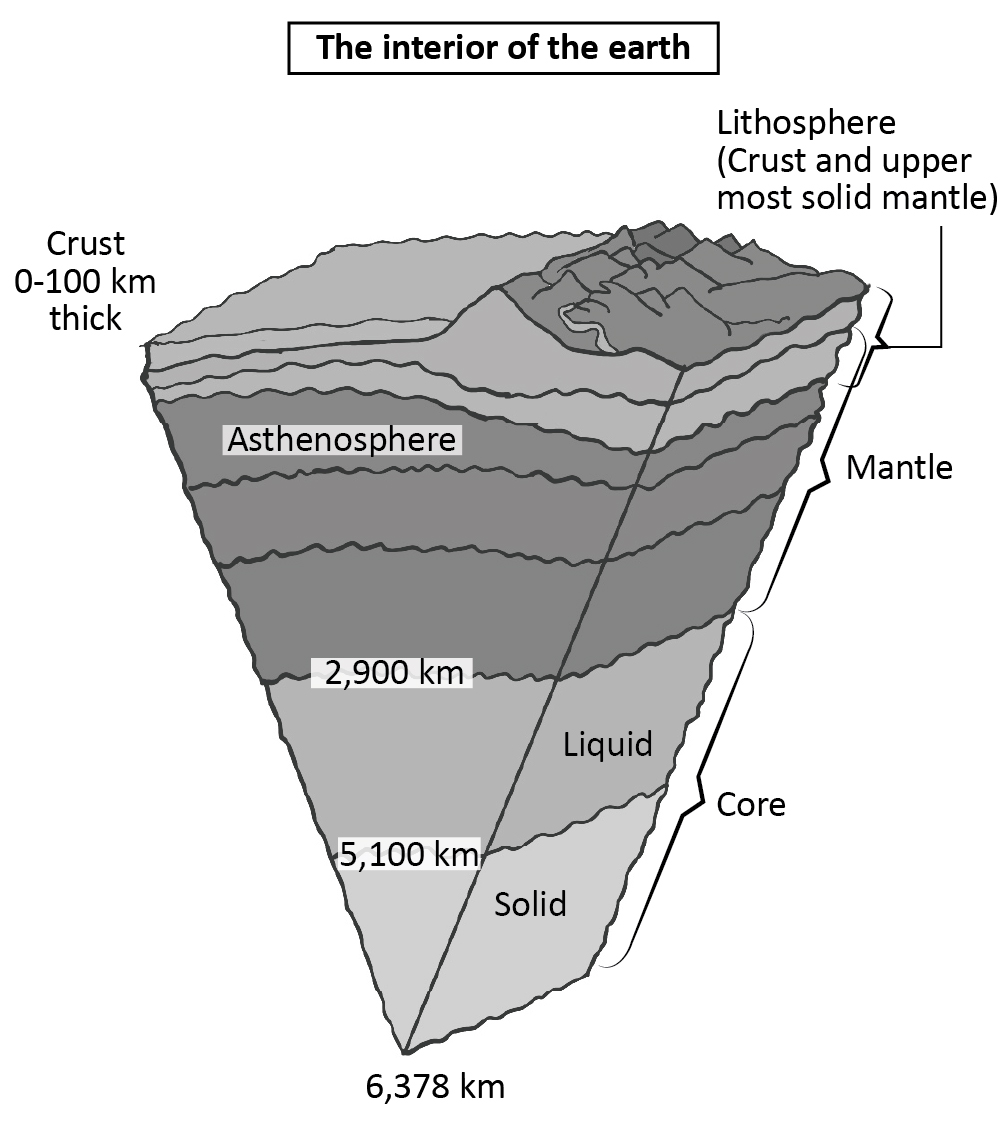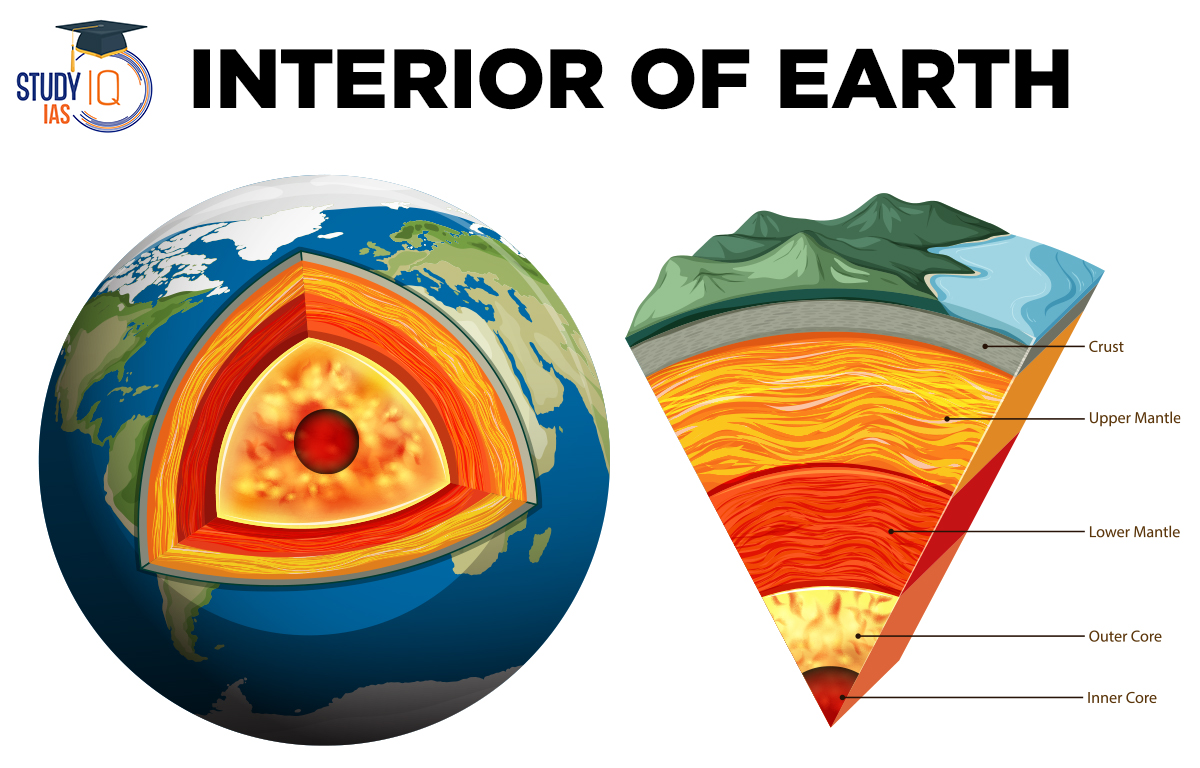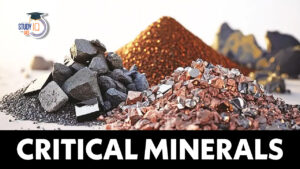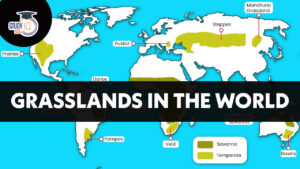Table of Contents
Interior of Earth
Earth has different layers based on what they are made of and their physical properties. The main layers are the core, mantle, and crust. In terms of mechanical properties, they include the lithosphere, asthenosphere, lower mantle, outer core, and inner core.
At the very center of the Earth is the inner core, which is solid iron and about 1221 kilometers wide. It is extremely hot, with temperatures as high as the surface of the sun (around 5200°C) but the immense pressure keeps it solid. The heat comes from the decay of radioactive elements, leftover heat from when the planet formed, and heat from the outer core solidifying. The inner core rotates in the same direction as the Earth’s surface, but slightly faster, completing an extra rotation every 1000 years or so.
Sources of Information about the Earth’s Interior
There are mainly two types of sources that give information about the interior of the Earth i.e. Direct sources and indirect sources.
| Sources | Details |
| Direct Sources |
|
| Indirect Sources |
|
Diagram of Interior of Earth
Here’s a diagram of the Earth’s interior layers:

Layers of Interior of Earth Layers
The three fundamental parts of the earth’s structure are the core, the mantle, and the crust. Only 15% of the Earth’s volume is made up of the core, and 84% is made up of the mantle. The crust represents the final 1% of the total.
- The Crust
- Mantle
- Core
The Crust
| Crust |
|
Mantle
| Mantle |
|
Core
| Core |
|
Temperature, Pressure and Density of the Interior of Earth
Temperature
- In mines and deep wells, the temperature rises with increasing depth. These findings, along with molten lava erupting from the earth’s interior, support the theory that the temperature rises towards the earth’s core.
- The various observations show that the rate of temperature increase is not uniform from the surface to the centre of the Earth. Initially, the rate of temperature increase is 1°C for every 32 metres of depth increase.
- The temperature rises at a rate of 120 degrees Celsius per kilometre in the upper 100 kilometres and 200 degrees Celsius per kilometre in the next 300 kilometres.
- However, as one descends deeper, this rate drops to just 100 C per km. As a result, it is assumed that the rate of temperature increase beneath the surface decreases towards the centre (do not confuse rate of temperature increase with temperature increase).
- The temperature is constantly rising from the earth’s surface to the centre. The temperature at the centre is estimated to be between 30000C and 50000C, but it could be much higher due to chemical reactions occurring under high-pressure conditions. Because of the heavy pressure of the overlying materials, the materials at the centre of the earth are solid even at such high temperatures.
Pressure
- Pressure is increasing from the surface to the centre of the earth, just like temperature. This is due to the enormous weight of the overlying materials, such as rocks.
- It is estimated that the pressure in the deeper portions is nearly 3 to 4 million times greater than the pressure in the atmosphere at sea level.
- The materials beneath will melt towards the centre of the earth at high temperatures, but due to high pressure, these molten materials will acquire solid properties and are likely in a plastic state.
Density
- The density of the earth’s layers increases towards the centre due to increased pressure and the presence of heavier materials such as nickel and iron.
- The average density of the layers rises from the crust to the core, reaching nearly 14.5g/cm3 in the centre.
Interior of Earth UPSC
Only a few kilometres of the earth’s interior have we been able to directly witness through mining and drilling operations. Direct observations in the interior of the earth are mostly restricted by the quick rise in temperature below the surface of the planet. But even so, scientists have a good concept of what the interior of the earth looks like thanks to some direct and indirect sources.
This topic is of immense importance when it comes to UPSC Preparation. A candidate must be well-versed in Physical Geography. Notes for UPSC in addition to reading the UPSC Book and the NCERT Books for UPSC to cover this topic.


 Critical Minerals, Key Issues, Importanc...
Critical Minerals, Key Issues, Importanc...
 Grasslands in the World, Map, Types and ...
Grasslands in the World, Map, Types and ...
 Places in News for UPSC 2025 for Prelims...
Places in News for UPSC 2025 for Prelims...





















